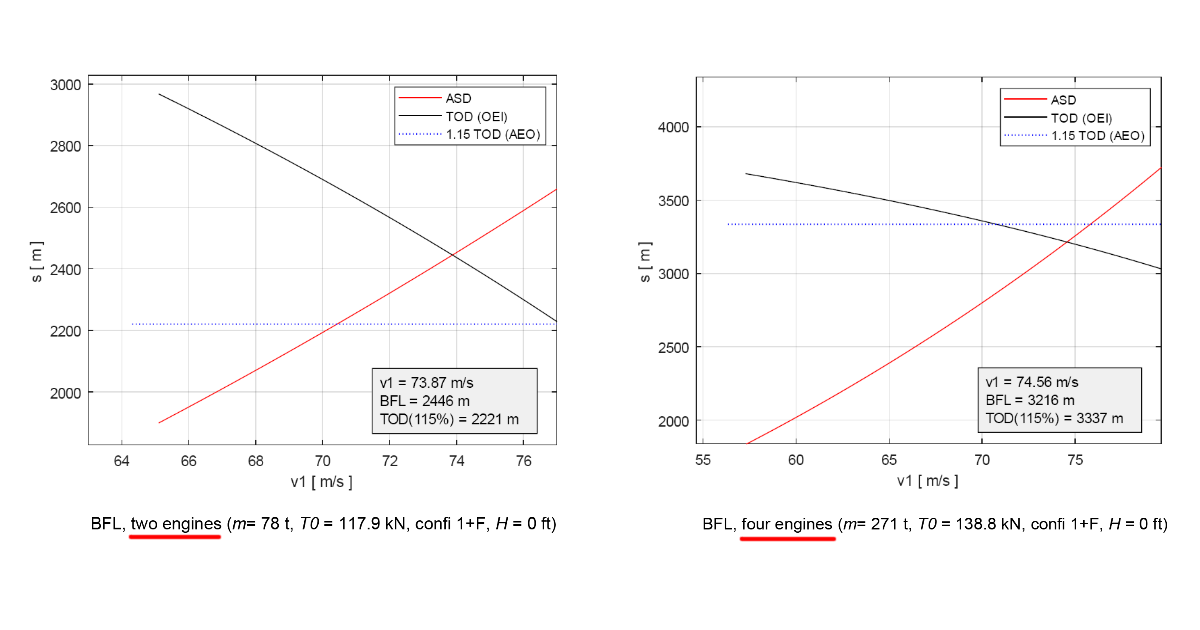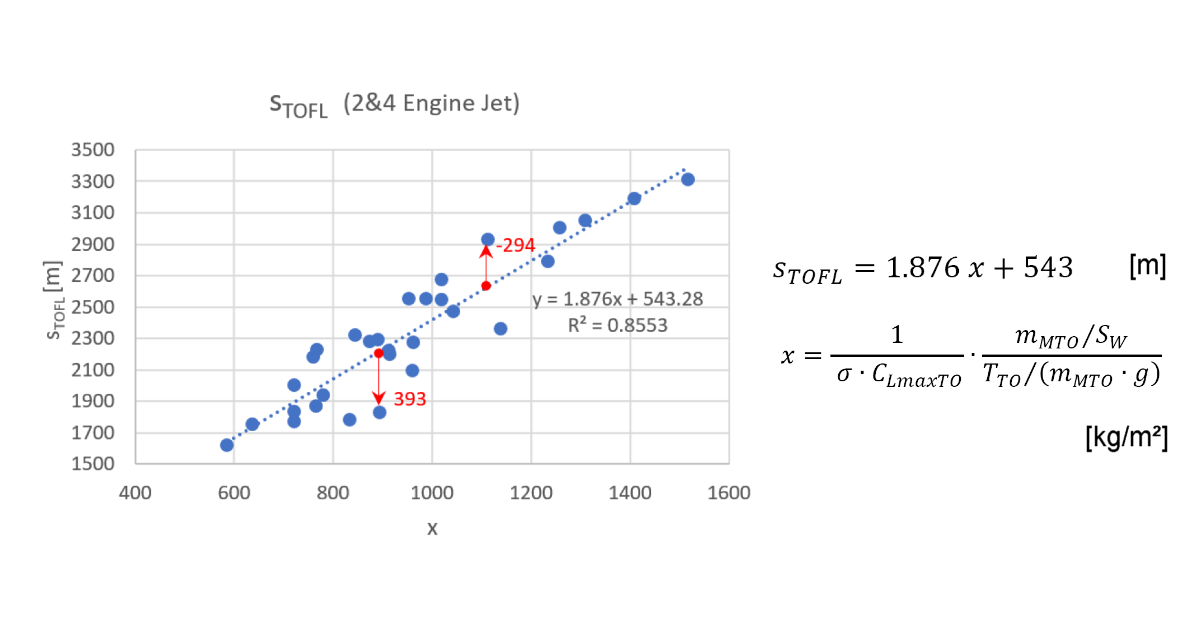
Numerical and Analytical Takeoff Field Length Calculations for Jet Aircraft
Bachelor Thesis
Autor: Dennis Lucht
Date: 2022-06-15
Supervisor: Dieter Scholz
Abstract
Purpose – The greater of two distances (Balanced Field Length or Takeoff Distance +15%) results in the Takeoff Field Length (TOFL). The TOFL is a takeoff distance with safety margins according to Certification Standards for Large Aeroplanes by EASA (CS-25) and FAA (FAR Part 25). Simple analytical approximations for the TOFL are checked against more demanding numerical simulations to determine the validity of the simple solutions and to implement adjustments for them as necessary. --- Methodology – The differential equation of the aircraft's acceleration is solved in MATLAB together with varying engine failure speeds. Analytical calculations of the Balanced Field Length by Torenbeek, Kundu, and Loftin are investigated. This includes the evaluation of statistical data. --- Findings – Analytical approximations deviate by 0.1% to 28.2% from the numerical solution. The most accurate analytical approximation is the simple method proposed by Loftin based on statistics. It shows deviations of less than 5.4%. The results confirm that the TOFL for jets with four engines is determined by the Takeoff Distance +15%, while for jets with two engines, the Balanced Field Length is decisive for TOFL. --- Research limitations – Simplifying assumptions had to be made e.g. regarding rotation time and speed, flap geometry, and asymmetric drag. While ground distances were solved numerically from acceleration and deceleration, air distance and rotation distance had to be determined analytically. --- Practical implications – A reliable and tested analytical procedure is useful for quick aircraft performance estimates and to include an inverse TOFL method into aircraft preliminary sizing. --- Originality – This seems to be the first report to provide a systematic check of available analytical approximations for the TOFL in comparison with a numerical solution.
Download full text
 TextLuchtBachelor.pdf
Size: 5.0M
TextLuchtBachelor.pdf
Size: 5.0M
URN, the Persistent Identifier (from the German National Library) to quote this Landing Page:
https://nbn-resolving.org/urn:nbn:de:gbv:18302-aero2022-06-15.018 
Entries into
- the German National Library (https://www.dnb.de),
- the Repository of Leibniz University Hannover (https://www.repo.uni-hannover.de) for the DOI,
- and the Internet Archive
will come later.
Associated research data: https://doi.org/10.7910/DVN/QX3MAH

Balanced Field Length (BFL) and Take-Off Distance (TOD) with All Engines Operative (AEO) factored with 1.15 to give TOD1.15 . Aircraft with 2 engines are sized from BFL. Aircraft with 4 engines are sized from TOD1.15 .

Modified analytical solution from Loftin to estimate Take-Off Field Length (TOFL).
LAST UPDATE: 16 September 2025
AUTHOR: Prof. Dr. Scholz
IMPRESSUM (PDF)

 Prof. Dr. Scholz
Prof. Dr. Scholz
 Aircraft Design and Systems Group (AERO)
Aircraft Design and Systems Group (AERO)
 Aeronautical Engineering
Aeronautical Engineering
 Department of Automotive and Aeronautical Engineering
Department of Automotive and Aeronautical Engineering
 Faculty of Engineering and Computer Science
Faculty of Engineering and Computer Science
 Hamburg University of Applied Sciences
Hamburg University of Applied Sciences


 TextLuchtBachelor.pdf
Size: 5.0M
TextLuchtBachelor.pdf
Size: 5.0M


 Prof. Dr. Scholz
Prof. Dr. Scholz
 Aircraft Design and Systems Group (AERO)
Aircraft Design and Systems Group (AERO)
 Aeronautical Engineering
Aeronautical Engineering
 Department of Automotive and Aeronautical Engineering
Department of Automotive and Aeronautical Engineering
 Faculty of Engineering and Computer Science
Faculty of Engineering and Computer Science
 Hamburg University of Applied Sciences
Hamburg University of Applied Sciences